Good web design has visual weight, is optimized for various devices, and has content that is prioritized for the medium.


Good web design has visual weight, is optimized for various devices, and has content that is prioritized for the medium.
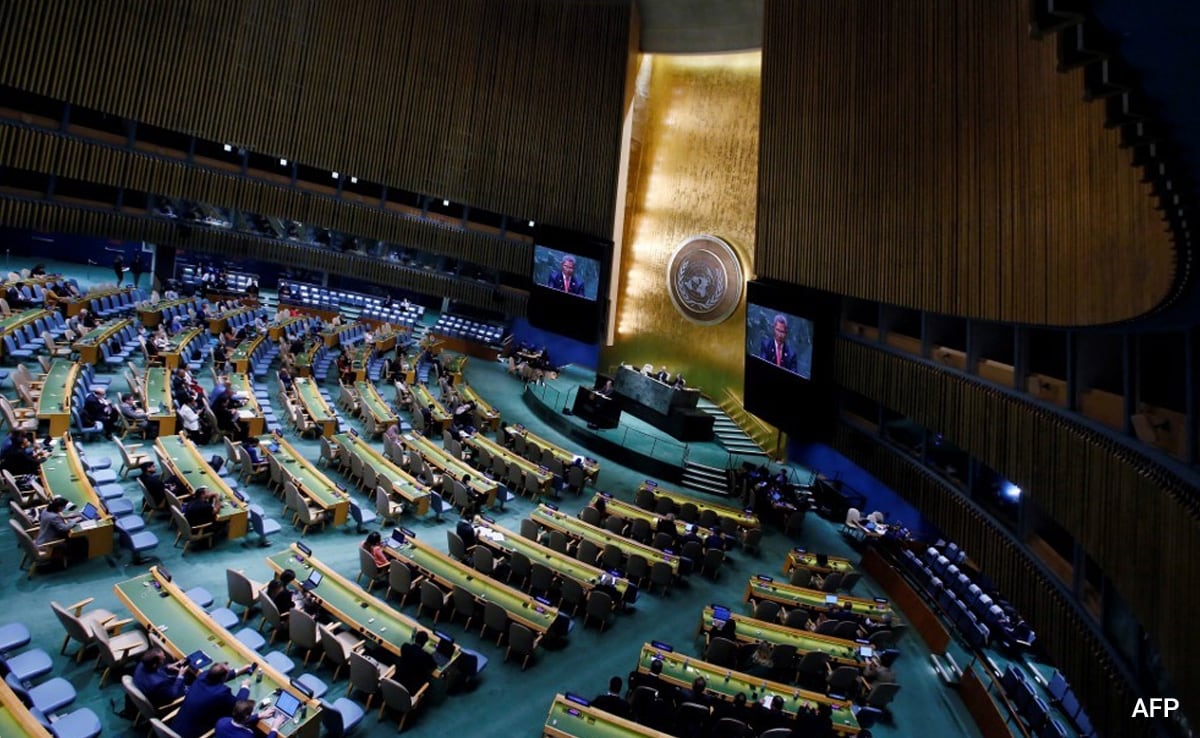

The Palestinians are currently a non-member observer state.
United Nations:
A United Nations Security Council committee considering an application by the Palestinian Authority to become a full U.N. member “was unable to make a unanimous recommendation” on whether it met the criteria, according to the committee report seen by Reuters on Tuesday.
The Palestinian Authority is still expected to push the 15-member Security Council to vote – as early as this week – on a draft resolution recommending it become a full member of the world body, diplomats said.
Such membership would effectively recognize a Palestinian state.
The Palestinians are currently a non-member observer state, a de facto recognition of statehood that was granted by the 193-member U.N. General Assembly in 2012.
But an application to become a full U.N. member needs to be approved by the Security Council, where Israel ally the United States can block it, and then at least two-thirds of the General Assembly.
The United States said earlier this month that establishing an independent Palestinian state should happen through direct negotiations between the parties and not at the United Nations.
The U.N. Security Council has long endorsed a vision of two states living side by side within secure and recognized borders. Palestinians want a state in the West Bank, east Jerusalem and Gaza Strip, all territory captured by Israel in 1967.
Little progress has been made on achieving Palestinian statehood since the signing of the Oslo Accords between Israel and the Palestinian Authority in the early 1990s.
The Palestinian push for full U.N. membership comes six months into a war between Israel and Palestinian Hamas militants in Gaza, and as Israel is expanding settlements in the occupied West Bank.
The Security Council committee on the admission of new members – made up of all 15 council members – agreed to its report on Tuesday after meeting twice last week to discuss the Palestinian application.
“Regarding the issue of whether the application met all the criteria for membership … the Committee was unable to make a unanimous recommendation to the Security Council,” the report said, adding that “differing views were expressed.”
U.N. membership is open to “peace-loving states” that accept the obligations in the founding U.N. Charter and are able and willing to carry them out.
(Except for the headline, this story has not been edited by NDTV staff and is published from a syndicated feed.)
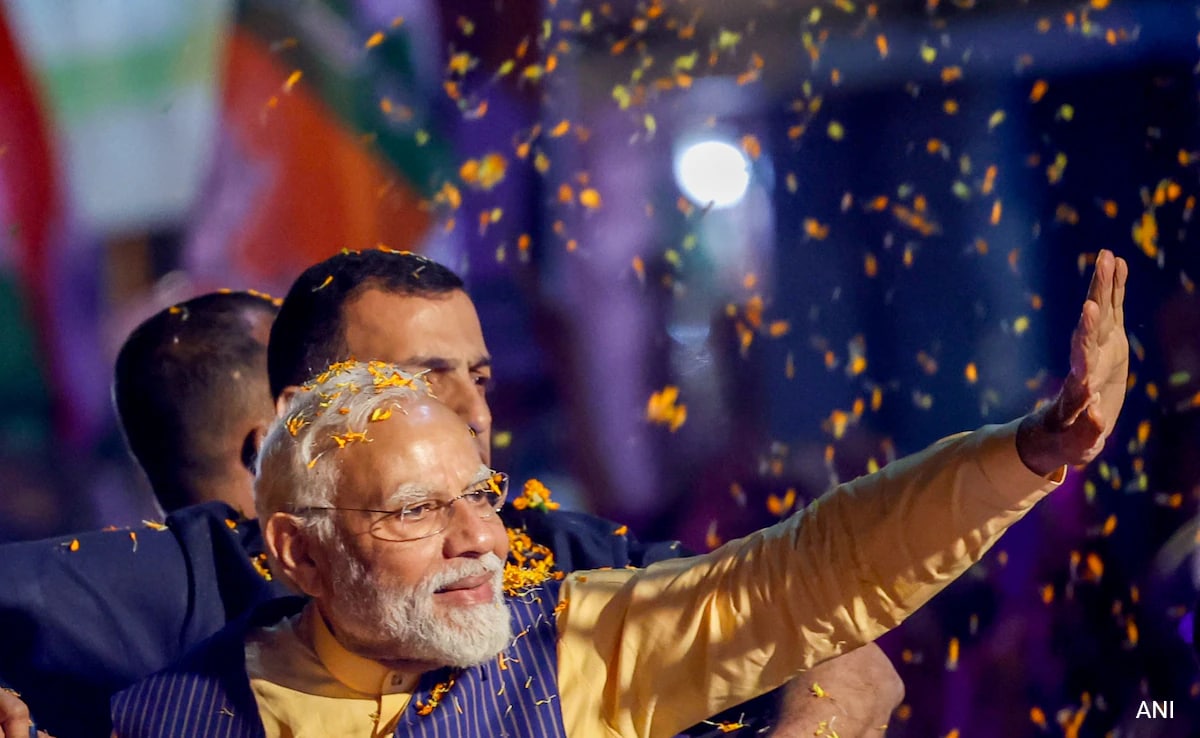

PM Modi will address an election rally in Nalbari today. (File)
Guwahati:
Prime Minister Narendra Modi on Tuesday held a roadshow on the busy Guwahati-Shillong Road, with massive crowds turning up to greet him.
He arrived in Assam in the evening on a two-day visit. He will address an election rally in Nalbari on Wednesday.
The two-km-long roadshow of the Prime Minister began near Rajiv Bhawan, the state Congress headquarters, and concluded near the state secretariat in Dispur.
People confined behind barricades put up along the road raised slogans in favour of the BJP and waved party flags as PM Modi’s cavalcade traversed the stretch.
The Prime Minister, who was seen standing on the footrest of the vehicle with Assamese ‘Gamosa’ around his neck, waved back at the crowds, comprising a large number of men and women.
Chief Minister Himanta Biswa Sarma was also seen waving at the crowds from a different vehicle, which was part of the PM’s convoy.
Tight security arrangements were made for the Prime Minister’s visit with strict traffic regulations and a ”no drone fly zone” along the route to be taken by him on both days of his visit.
Earlier in the evening, PM Modi arrived at the Lokpriya Gopinath International Airport in Guwahati, where he was received by Himanta Biswa Sarma and BJP state unit president Bhabesh Kalita.
“Extended a warm welcome to Hon’ble Prime Minister Shri @narendraji at LGBI Airport, as he arrived on his 27th visit to Assam,” Himanta Biswa Sarma posted on X.
“The outpouring of emotion was abundantly evident as Modi Parivar in Guwahati turned up in large numbers to bless Adarniya @narendramodi Ji ahead of his historic third term,” he added.
After a night halt in Guwahati, PM Modi will leave for Nalbari on Wednesday to address an election rally in support of NDA candidate Phani Bhushan Choudhury of Asom Gana Parishad.
Nalbari assembly segment is under Barpeta parliamentary constituency which will go to polls in the third phase on May 7.
Phani Bhushan Choudhury is locked in a triangular contest with Deep Bayan of the Congress and CPI(M)’s Manoranjan Talukdar.
(Except for the headline, this story has not been edited by NDTV staff and is published from a syndicated feed.)


The accused man, who was reportedly drunk during the killing, was arrested. (Representative)
Chaibasa, Jharkhand:
A woman and her two minor daughters were axed to death allegedly by her husband in Jharkhand’s West Singhbhum district, police said on Tuesday.
The accused man, who was reportedly drunk during the killing, was arrested.
The incident happened in Ludrabasa village under Muffasil police station on the intervening night of Monday and Tuesday.
Police said Gurucharan Padiya and his wife Jano used to quarrel frequently over his habit of drinking.
Around 2.30 am on Tuesday, they had an altercation over some issue and in a fit of rage, Padiya picked up an axe and killed her as well as their daughters aged 5 years and 1 year, police said.
The bodies were sent for post-mortem examination.
(Except for the headline, this story has not been edited by NDTV staff and is published from a syndicated feed.)
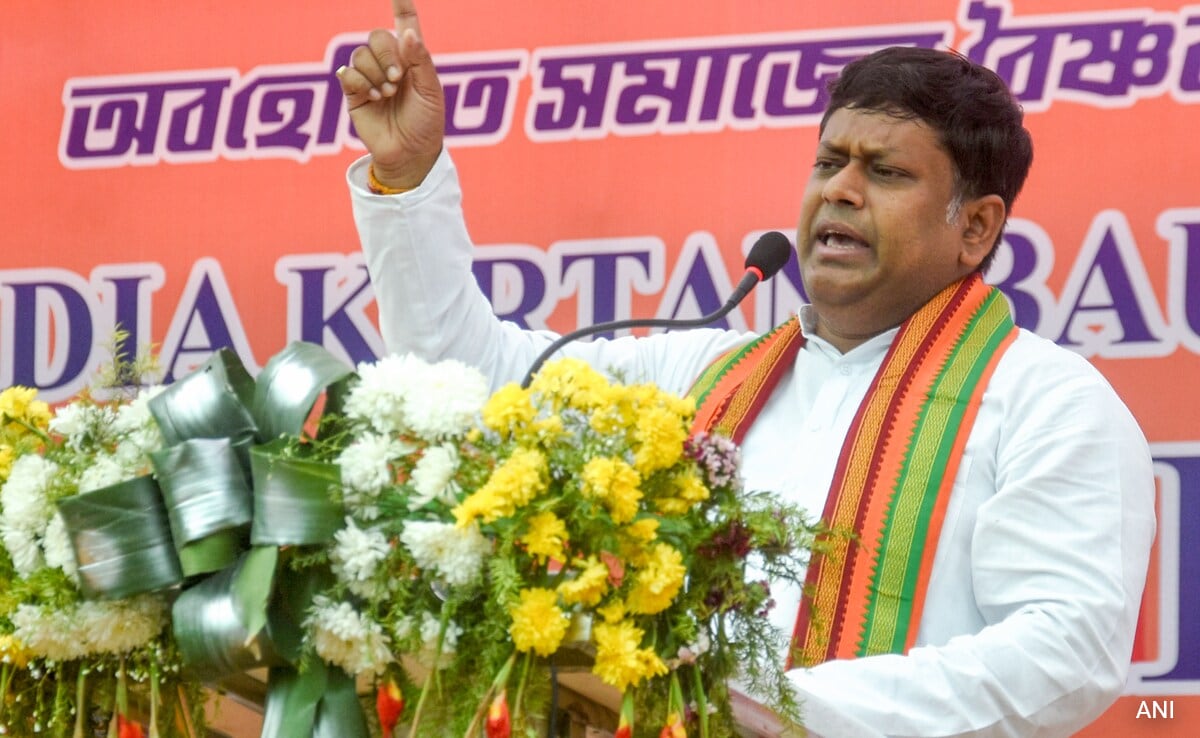

In 2019, Sukanta Majumdar declared assets worth Rs 58.25 lakh (File)
Kolkata:
Assets of Darjeeling’s sitting BJP MP Raju Bista, who is seeking re-election, registered a 215 per cent rise since the last Lok Sabha elections, an analysis of his self-sworn affidavit revealed.
Assets of BJP’s state president Sukanta Majumdar, who is also seeking re-election from the Balurghat seat, recorded a 114 per cent rise since 2019, the report stated.
West Bengal Election Watch and Association for Democratic Reforms (ADR) analysed self-sworn affidavits of all 47 candidates who are contesting from three constituencies of West Bengal — Darjeeling, Balurghat and Raiganj — that are going to polls in the second phase on April 26.
Mr Bista, according to his affidavit filed during the 2019 elections, had assets worth over Rs 15 crore.
In this election’s affidavit, he declared assets worth Rs 47 crore, an increase of over Rs 32 crore.
In 2019, Mr Majumdar declared assets worth Rs 58.25 lakh, which grew to Rs 1.24 crore in 2024, the report stated.
(Except for the headline, this story has not been edited by NDTV staff and is published from a syndicated feed.)
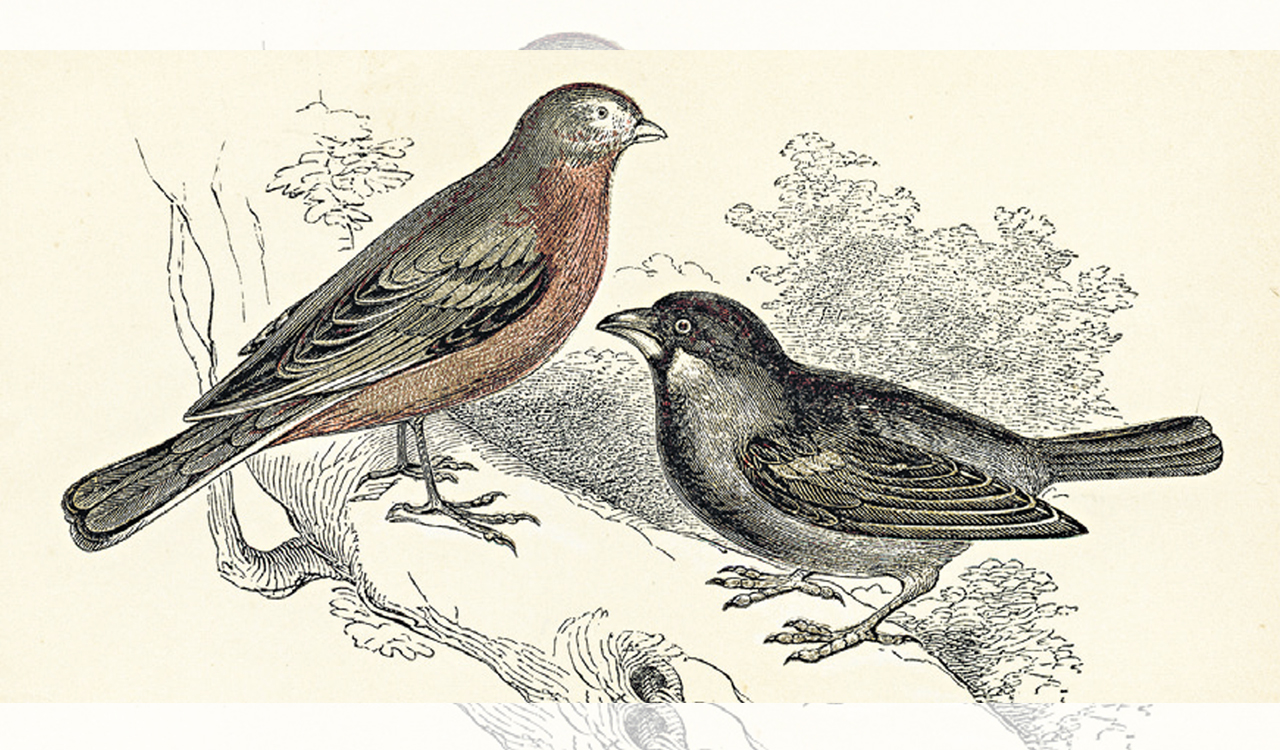
When one species dies, what is lost forever is an entire lifestyle, a whole tradition of living and, therefore, a part of planetary memory
Published Date – 16 April 2024, 11:46 PM

By Pramod K Nayar
The nightingale’s song, the warbles and calls of different species have been the foundation of numerous poems down the ages. Animal communications, a huge field of study, argue for intra- and cross-species communications in the nonhuman. For those who believe these are human attempts to capture the world of animals, there are others who believe that animal sounds are a part of how humans and animals engage in world-making together. As the animal studies scholar Sundhya Walther notes, ‘we have always been surrounded by beings of all sorts who share elements of that which we had thought to be most distinctively our own: the capacities of will, thought, and consciousness’.
Much verse has been expended on reading birdsounds, metaphorising them and mourning their disappearance. This disappearance, for the poets, reduces the value of human habitation itself. The human habitat requires Nature’s surround-sound in these poets.
Sound Sense
Jonathan Bate, the well-known ecocritic, argues that poetry is a response to the poetry – or ‘song’, as he calls it – of the earth. Wordsworth, Shelley and the English Romantic poets built their poetic verses and worlds aroundthe nightingale’s or the thrush’s musical notes and, often, made metaphoric connections with the meanings and lives of humans.
In Shelley,the human is an ear-witness, for the bird is invisible: ‘Thou art unseen, but yet I hear thy shrill delight’. Later, Shelley offers a series of similes: ‘like a poet hidden’, ‘like a high-born maiden’, etc before making his comparison: ‘our sweetest songs are those that tell of saddest thought’. Committed to seeing the bird as a precursor to the poet, Shelley pleads:
Teach me half the gladness
That thy brain must know,
Such harmonious madness
From my lips would flow
The world should listen then, as I am listening now.
The bird is a muse that spurs human versification. Following Bate, this is an attempt to integrate the human with Nature, at least in verse. But it also implies a willingness to learn from Nature (note that the first verb of Shelley’s last stanza is ‘teach’), and this reiterates the older theme of Nature-as-teacher.
Others,like Keats, see Natural sounds as extending beyond the lifespan of the human:
Thou wast not born for death, immortal Bird!
No hungry generations tread thee down;
The voice I hear this passing night was heard
In ancient days by emperor and clown:
This is an attempt to demonstrate a certain continuity in and of Nature: generations of humans have heard the song of the earth, and learned from it, taken pleasure from it.
There is a pleasing uncertainty about bird sounds and their preferred meaning, for instance, in Wallace Stevens’ famous ‘Thirteen Ways of Looking at a Blackbird’:
I do not know which to prefer,
The beauty of inflections
Or the beauty of innuendoes,
The blackbird whistling
Or just after.
Stevens recalls Walt Whitman’s equally famous ‘mocking-bird’s throat’ and the human’s ‘beginning notes of yearning and love’ in ‘Out of the Cradle Endlessly Rocking’.
Allison Adelle Hedge Coke, of Native American and European descent, in ‘Platte Mares’ describes a landscape of multispecies sounds. Sandhill cranes, known for their trumpet-like calls, dot this landscape, and their mares are ‘purring chortling kettling’. Describing the soundscape as ‘call & response’ Coke documents a variety of their calls:
unison call, antiphonal
territorial call, mated
postures vocalized.
In Coke, it is just ‘the season’, defined by bird sounds, which makes a pleasurable season for the human ear-witness too.
Animal sounds surround us — althoughurban habitations today are short on these — and constitute, as the poets indicate, a world-making. The nonhuman mediates our experience of the world: they make up our senses.
Preying Sounds
Ted Hughes famously described the hawk in terms that are evocatively violent. Hughespresents the bird’s unsurpassed power in visceral but silent terms:
I kill where I please because it is all mine.
There is no sophistry in my body:
My manners are tearing off heads
And the hawk, obviously pleased with the world, decides that ‘I am going to keep things like this’.Decades before Hughes, Alfred Tennyson imaged Nature as a powerful bird. In Tennyson’s ‘The Eagle’ the predator makes no sound as it swoops down:
He watches from his mountain walls,
And like a thunderbolt he falls.
But human interpretations of predators and prey are also modes of world-making: we announce that Nature is ‘red in tooth and claw’ (Tennyson). And oftentimes, we miss the meaning of the sounds.
In Derek Walcott’s ‘The Season of Phantasmal Peace’, he records the birds’ ‘twittering tongues’. The birds in a concerted effort, ‘lifted together/the huge net of the shadows of this earth’. But the humans are unsure of the nature of this Nature:
they could not hear
battalions of starlings waging peaceful cries,
bearing the net higher, covering this world
like the vines of an orchard
Walcott’s lines resonate with the point made by Bate and other ecocritics that humans fail miserably in interpreting the sounds Nature makes.
Unsound Habitation
For many poets, the arrival of modernity and its consort, colonialism, has produced a significant loss: the shared world-making of humans and nonhumans.They mourn the fact that nonhuman sounds have all but disappeared, thus depriving human habitats too. Native American poets, in particular, see the European arrival in the ‘new world’ and the building of American ‘civilisation’ as instrumental in the loss of species habitats, and sounds.
Sherwin Bitsui, the Navajo poet, in his untitled poem in the collection Flood Song writes:
a nation growling into them
as they scrape double-plumed birdsongs
from the beaks of drowned hummingbirds
and smash them into eagle-bone whistles
then ringlets of fire
then the blood of orphaned lambs.
The nation ‘growls’ into and at the birds, and other species.
For Linda Hogan, another Native American poet, in a poem titled ‘Crows’, the crows’ ‘gravel voices/are thunder breaking the sky’. But Hogan notes that the crows’ sounds are drowned out by the noise of guns, and having been shot, the birds fall silent. So the harmless cacophony of bird calls is ended by the violent sound of bullets.
Even conservation attempts, writes Chippewa poet Kimberly Blaeser, cannot but be cliches now:
Nominal signs, these words we use—future, ecology, seven generations—
have yellowed into clichés, editorials that line the cages
of captured birds, burn in unransomed stone fireplaces
of America’s aspiring, royal mining families.
As humans destroy the habitats of the critters that makeand heal our world, the loss of one species is not of that species alone. When one species dies, what is lost forever is an entire lifestyle, a whole tradition of living and therefore a part of planetary memory.
This loss of planetary memory generates poetic mourning, leading Mahmoud Darwish to ask: ‘where should the birds fly after the last sky?’ But we also have Wallace Stevens in ‘Sunday Morning’:
I am content when awakened birds,
Before they fly, test the reality
Of misty fields, by their sweet questionings;
But when the birds are gone, and their warm fields
Return no more, where, then, is paradise?

(The author is Professor of English and UNESCO Chair in Vulnerability Studies at the University of Hyderabad. He is also a Fellow of the Royal Historical Society and The English Association, UK)
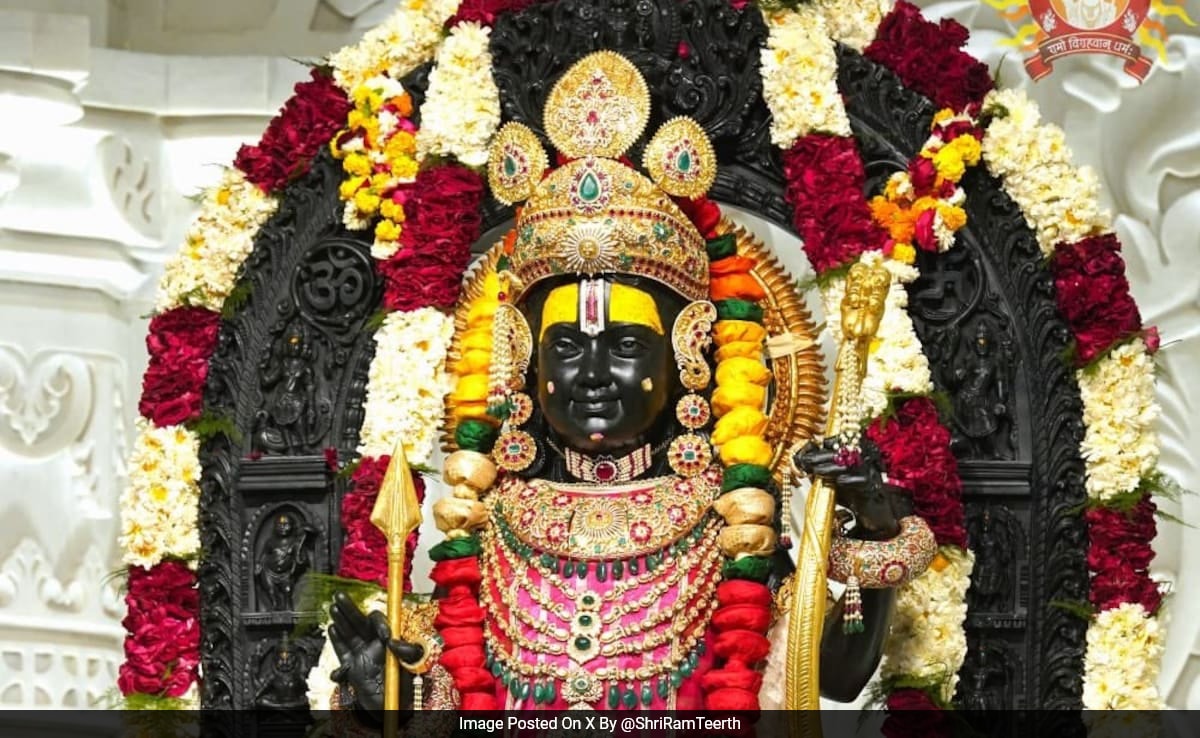

The system was tested by the scientists on Tuesday. (File)
Lucknow:
At noon on Ram Navami Wednesday, the Sun’s rays will fall on the forehead of Ram Lalla in Ayodhya, a ‘Surya tilak’ of the deity made possible by an elaborate mechanism involving mirrors and lenses.
This would be the first Ram Navami since the consecration of the Ram idol at the new temple, inaugurated by Prime Minister Narendra Modi on January 22.
The system was tested by the scientists on Tuesday.
“The basic objective of the Surya Tilak project is to focus a ’tilak’ on the forehead of Shri Ram idol on every Shri Ram Navami day. Under the project, sunlight will be brought on the forehead of Lord Ram at noon on Shri Ram Navami in the Chaitra month every year,” Dr S K Panigrahi, scientist at CSIR-CBRI Roorkee, who was associated with the project told news agency PTI.
Elaborating further, Dr S K Panigrahi said, “The position of the Sun changes every year on the day of Shri Ram Navami. Detailed calculations show that the date of Shri Ram Navami repeats every 19 years.” According to a senior scientist of Council of Scientific and Industrial Research (CSIR)-Central Building Research Institute (CBRI), Roorkee, the planned tilak size is 58 mm. The exact period of tilak on the forehead centre is about three to three-and-a-half minutes, with two minutes of full illumination, he said.
Meanwhile, a member of Shri Ram Janmabhoomi Teerth Kshetra Trust, Anil Mishra, told PTI, “During the Surya tilak, devotees will be allowed inside the Ram temple. Around 100 LEDs are being put up by the temple trust, and 50 by the government, which will show the Ram Navami celebrations. People will be able to see the celebrations from where they are present.” Sharing his personal experience in installing this unique mechanism, Dr D P Kanungo, chief scientist at CSIR-CBRI, Roorkee said, “Actually this is meticulously planned, designed and implemented to achieve utmost accuracy.” This will be a testament to our scientific acumen and indigenous technological development to showcase before our countrymen who have all the faith in and support to our scientific community, he said.
Asked what will happen to Surya tilak in case of a cloudy sky, Kanungo said, “That’s the limitation. We don’t wish to do with artificial light because of the faith and belief of our people.” In consultation with the Indian Institute of Astrophysics (IIA), Bangalore, the CSIR-CBRI, Roorkee team has developed a mechanism for a 19-year period to steer the sunlight from the third floor of the temple to the ‘garbha griha’.
The detailed complete design to bring the sunlight to the garbha griha is developed by CBRI, with the IIA providing consultancy for the optical design.
The fabrication of optical elements, pipes, tilt mechanism and other related components are carried out by Optics and Allied Engg Pvt Ltd (Optica), a Bangalore-based company.
Before implementing the opto-mechanical system in the Ram temple for Surya tilak, a scaled down model suitable for the Roorkee locality has been successfully validated. A full scale model has been successfully validated at Optica site at Bangalore in March 2024.
The CSIR-CBRI, Roorkee team along with IIA Bangalore and Optica Bangalore completed the installation in the first week of April, and repeated trials have been done, Dr S K Panigrahi said.
Meanwhile, explaining the opto-mechanical system for Surya tilak, Dr S K Panigrahi said, “The opto-mechanical system consists of four mirrors and four lenses fitted inside the tilt mechanism and piping systems. The complete cover with aperture for the tilt mechanism is placed at the top floor to divert the Sun rays through mirrors and lenses to the garbha girha.” “The final lens and mirror focus the Sun rays to the forehead of Shri Ram facing towards the east. The tilt mechanism is used to adjust the first mirror tilting for sending the Sun rays towards the north direction to the second mirror for making the Surya tilak every year on Shri Ram Navami day,” he said.
“All the piping and other parts are manufactured using the brass material. The mirrors and lenses which are used are of very high quality and durable to sustain for a long period.
“The inner surface of pipes, elbows and enclosures are black powder coated to avoid scattering of sunlight. Also at the top aperture, IR (infra red) filter glass is used to restrict the Sun heat wave to fall on the forehead of the idol,” Dr S K Panigrahi said.
He said the team from CSIR-CBRI Roorkee includes Dr S K Panigrahi, Dr R S Bisht, Kanti Solanki, V Chakradhar, Dinesh and Sameer. Prof R Pradeep Kumar (Director, CSIR-CBRI) mentored the project.
From IIA Bangalore side, Dr Anna Purni S (Director IIA), Er S Sriram and Professor Tushar Prabhu are the consultants. Rajinder Kotaria, managing director, Optica, and his team Nagraj, Vivek, Thava Kumar were actively involved in fabrication and installation part.
(Except for the headline, this story has not been edited by NDTV staff and is published from a syndicated feed.)
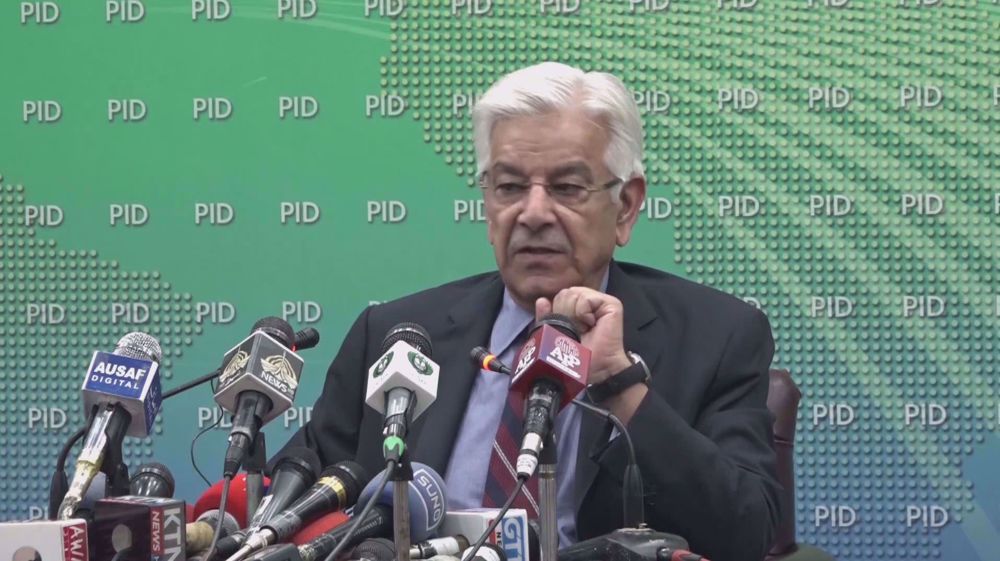
Nasir Kazmi
Press TV, Islamabad
Pakistan has openly supported Iran’s retaliatory attack on Israeli-occupied territories, stating that it was Tehran’s legitimate right to respond to Israel’s assault on its consulate in Damascus.
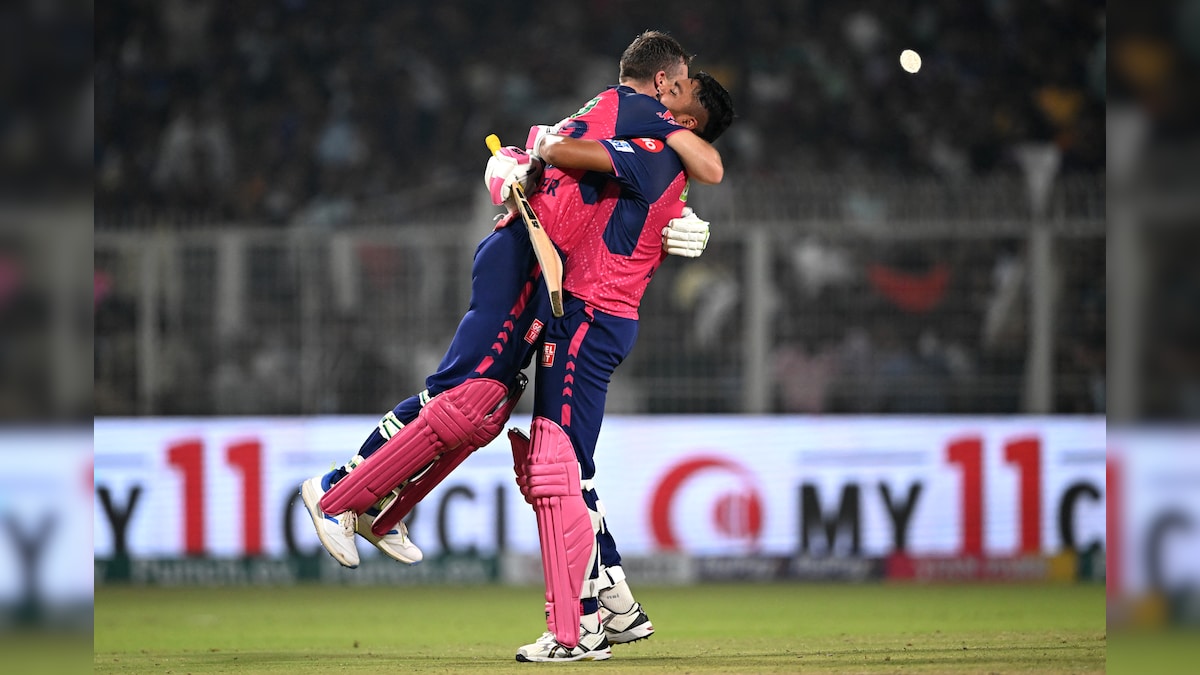

Updated IPL 2024 Points Table, Orange Cap, Purple Cap List After KKR vs RR Game© AFP
Rajasthan Royals consolidated their position at the top of the IPL 2024 points table with a thrilling win over Kolkata Knight Riders on Tuesday. Jos Buttler played a sensational knock to guide his side to victory on the final ball of the match as Sunil Narine‘s maiden T20 century went in vain. Thanks to the win, RR have 12 points from 7 matches and are best placed to book their spot in the IPL 2024 playoffs. KKR, on the other hand, remained second with eight points but they still have the best NRR (Net Run Rate) in the competition. Chennai Super Kings and Sunrisers Hyderabad are third and fourth respectively with eight points each. Royal Challengers Bengaluru are at the bottom of the table.

Royal Challengers Bengaluru star batter Virat Kohli continues to top the list when it comes to the Orange Cap followed by Rajasthan Royals’ Riyan Parag. KKR all-rounder Sunil Narine grabbed the third spot thanks to his ton while Sanju Samson and Rajasthan Royals are 4th and 5th respectively.
Coming to the Purple Cap, Yuzvendra Chahal is in the lead followed by Jasprit Bumrah, Mustafizur Rahman, Sunrisers Hyderabad captain Pat Cummins and Punjab Kings pacer Kagiso Rabada.
Rajasthan Royals pulled off the Indian Premier League’s biggest run chase to beat Kolkata Knight Riders by two wickets.
Asked to bat first, KKR rode on Sunil Narine’s 56-ball 109 to post 223/6 in the allotted 20 overs.
In reply, RR were in all sorts of trouble at one stage but Jos Buttler blasted his way to an unbeaten 60-ball 107, as the visitors completed the chase in the last ball of the match.
After his team was asked to bat first on a fresh pitch, Narine blazed away to a 49-ball 100 to lead KKR’s charge in this top-of-the-table clash at Eden Gardens.
It was a one-man show from KKR as Narine (109 off 56) batted till the 18th over, first stitching 85 runs with Angkrish Raghuvanshi (30) and then adding 51 runs with Andre Russell (13).
However, Buttler had other ideas as he did the job for RR from an extremely difficult position.
(With PTI inputs)
Topics mentioned in this article

On Monday evening, the child was playing cricket along with his friends and during the game the ball landed in an indoor stadium located near the local open ground.
Published Date – 16 April 2024, 10:40 PM

Hyderabad: A 12-year-old boy drowned in a swimming pool at a Sanathnagar on Monday evening. The boy Karthikeya, studying in standard sixth lived along with his family at Subashnagar in Sanathnagar.
On Monday evening, the child was playing cricket along with his friends and during the game the ball landed in an indoor stadium located near the local open ground.
Karthikeya, scaled the wall of the indoor stadium and went inside.
“We suspect he tried to collect the ball that fell in the pool and drowned. The body was retrieved later in the night,” said an official of Sanathnagar police station. A case is registered.